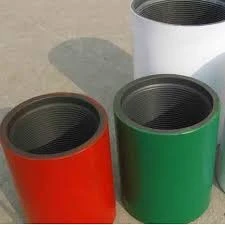- Afrikaans
- Albanian
- Amharic
- Arabic
- Armenian
- Azerbaijani
- Basque
- Belarusian
- Bengali
- Bosnian
- Bulgarian
- Catalan
- Cebuano
- Corsican
- Croatian
- Czech
- Danish
- Dutch
- English
- Esperanto
- Estonian
- Finnish
- French
- Frisian
- Galician
- Georgian
- German
- Greek
- Gujarati
- Haitian Creole
- hausa
- hawaiian
- Hebrew
- Hindi
- Miao
- Hungarian
- Icelandic
- igbo
- Indonesian
- irish
- Italian
- Japanese
- Javanese
- Kannada
- kazakh
- Khmer
- Rwandese
- Korean
- Kurdish
- Kyrgyz
- Lao
- Latin
- Latvian
- Lithuanian
- Luxembourgish
- Macedonian
- Malgashi
- Malay
- Malayalam
- Maltese
- Maori
- Marathi
- Mongolian
- Myanmar
- Nepali
- Norwegian
- Norwegian
- Occitan
- Pashto
- Persian
- Polish
- Portuguese
- Punjabi
- Romanian
- Russian
- Samoan
- Scottish Gaelic
- Serbian
- Sesotho
- Shona
- Sindhi
- Sinhala
- Slovak
- Slovenian
- Somali
- Spanish
- Sundanese
- Swahili
- Swedish
- Tagalog
- Tajik
- Tamil
- Tatar
- Telugu
- Thai
- Turkish
- Turkmen
- Ukrainian
- Urdu
- Uighur
- Uzbek
- Vietnamese
- Welsh
- Bantu
- Yiddish
- Yoruba
- Zulu
Differences Between Casing and Tubing in Oil and Gas Industry
Casing and tubing are vital components in the oil and gas industry, playing crucial roles in the drilling and production processes. Understanding the differences between these two elements is essential for anyone involved in petroleum engineering or operations.
Casing refers to the series of steel pipes that are installed in the borehole after drilling. Its primary purpose is to stabilize the wellbore, prevent it from collapsing, and protect the surrounding formation from contamination. Casing comes in various sizes and grades, depending on the depth of the well and the geological conditions of the area. Typically, several layers of casing are installed, starting with the largest diameter called the conductor casing, followed by intermediate and production casing. Each layer serves specific functions, such as isolating different pressure zones and providing support to the structure.
On the other hand, tubing is a smaller diameter pipe that is inserted inside the casing to transport the oil or gas from the reservoir to the surface. Tubing is designed to withstand the pressures encountered during production and is typically made from high-strength materials to ensure its durability and reliability. Unlike casing, which is fixed in place, tubing can be removed or replaced easily for maintenance or operational reasons.
One of the main differences between casing and tubing lies in their operational purpose. Casing is primarily focused on wellbore stability and environmental protection, while tubing's main function is to facilitate the flow of hydrocarbons during production. This distinction leads to differences in design and installation practices; casing requires cementing to secure it in place, forming a seal against potential leaks, whereas tubing is run into the well after the casing is set.
what are the differences between casing and tubing?

Another important difference is the pressure rating. Casing is designed to withstand the pressures from the formation and must be robust enough to handle extreme external forces. Conversely, tubing is engineered for internal pressures, as it must transport the oil or gas from the reservoir to the surface under high pressure. Therefore, the specifications for casing and tubing are different, with casing typically having thicker walls compared to tubing.
In terms of maintenance and repair, tubing is generally easier to work with because it can be pulled out of the wellbore to facilitate repairs or replacements without disrupting the casing. This flexibility is critical during the production phase, as operators often need to perform routine maintenance or make adjustments to ensure optimal flow rates.
In conclusion, while casing and tubing are both essential for the successful extraction of hydrocarbons, they serve distinct functions in the well construction and production processes. Casing provides structural integrity and environmental protection, while tubing facilitates the transportation of oil and gas to the surface. Understanding these differences is crucial for optimizing drilling operations and ensuring safe and efficient production practices in the oil and gas industry.
-
Tubing Pup Joints: Essential Components for Oil and Gas OperationsNewsJul.10,2025
-
Pup Joints: Essential Components for Reliable Drilling OperationsNewsJul.10,2025
-
Pipe Couplings: Connecting Your World EfficientlyNewsJul.10,2025
-
Mastering Oilfield Operations with Quality Tubing and CasingNewsJul.10,2025
-
High-Quality Casing Couplings for Every NeedNewsJul.10,2025
-
Boost Your Drilling Efficiency with Premium Crossover Tools & Seating NipplesNewsJul.10,2025







